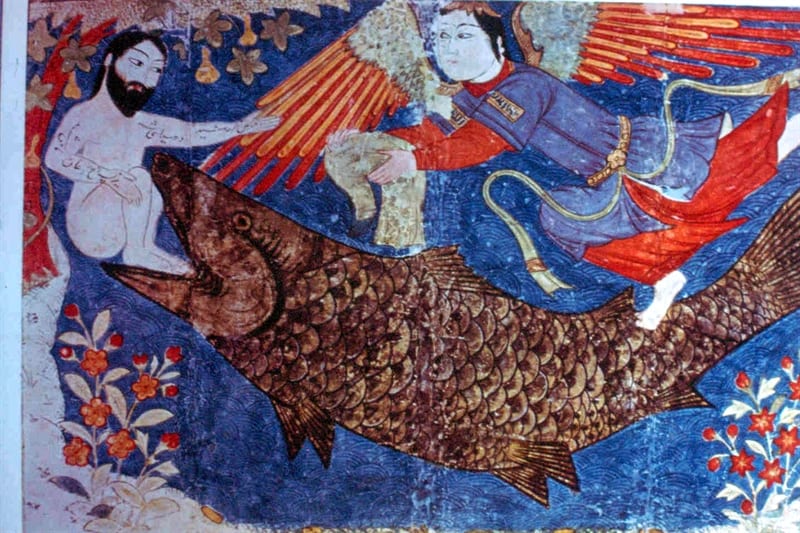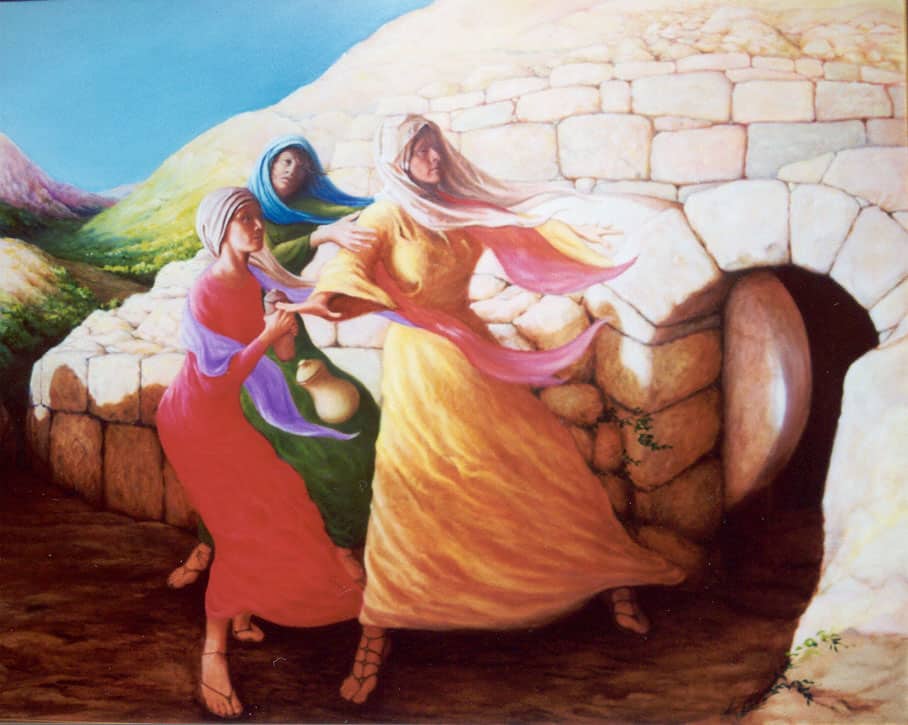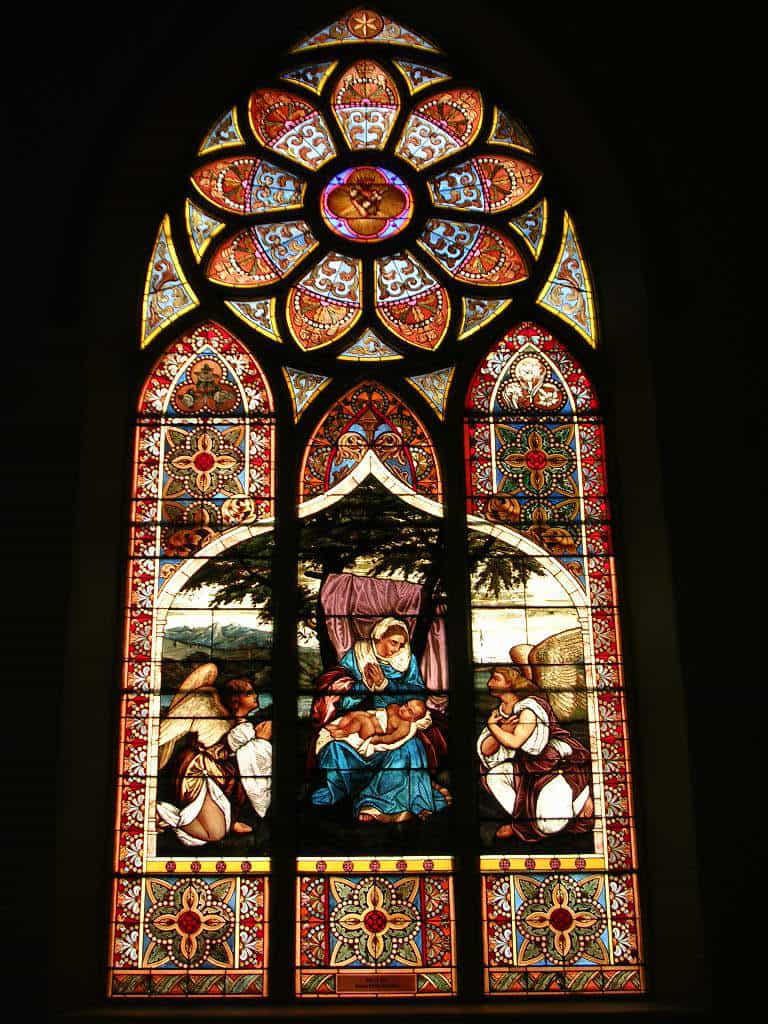The question I get asked most regarding The Jesus Discovery and the Talpiot tomb is how could one believe that the followers of Jesus were running around Jerusalem three days after Jesus died claiming he had been raised from the dead if his body was in a tomb was just two miles to the south of the Old City. Here is the answer and when one understands this everything falls into place.
There is a lot of confusion among Christians today–as well as among Jews and secularists for that matter–as to what the term resurrection of the dead means, whether as applied to Jesus and the Easter event, or more generally to humankind at the end of days. Most often the notion of resurrection of the dead is confused with a somewhat different Greek idea, the immortality of the soul–but these two ideas are quite distinct from one another as we will see below.

Christians affirm that Jesus was “raised on the third day, ascended to heaven, and sits at the right hand of God,” whereas Jews pray three times daily the Amidah, which praises God who, literally, “makes live the dead.” Understanding resurrection of the dead has everything to do with placing our claims in the new book, The Jesus Discovery, regarding the two Talpiot tombs, in a proper historical context. One of the main objections to the case we present is the objection that the notion of Jesus’ earliest followers celebrating his resurrection while knowing his bones are reverently buried in a tomb is a classic non-sequitur. I argue that such is not the case and it actually represents a misunderstanding of what the earliest followers of Jesus clearly affirmed about his resurrection, and thus about their own, which they anticipated in the imminent future. This post is long and detailed but the subject is complex and I hope it will go a long way toward clearing some of the confusion for those willing to dig a bit into the sources and the contemporary history of the time.
When one thinks about our concepts of death and the afterlife in the Western world the questions most people have are questions of individual survival—whether there is “life” after death. The nature of that life or survival can be thought of in a variety of ways, but the fundamental question is “What happens to me when I die?” Is there something or is there nothing? Those who believe in “life after death” are affirming, in some manner, the idea that some essence of the individual self, the person we sense ourselves to be, survives the death of the body. It is an extension of Descartes’s dictum: “I think therefore I am.” It is the survival of the “I,” the ego self that is in question. It is assumed that the biological self or body returns to dust or ashes, but the inner self lives on in some way. These questions come to us intuitively on the level of personal experience any time someone we love dies. The heart stops, respiration ceases, and the deceased is pronounced dead. The person becomes a “corpse” and it is easy to think of the now decaying body as merely a “house” or vehicle for the inner self or soul—but not the person we knew in life. We dispose of the body according to our cultural customs and personal choices, respectfully, but also realistically, knowing that it is irretrievable.
This view of the human person as both a mortal physical body and an immortal soul or spirit, is deeply rooted in our Western religious and philosophical past. For most, without belief in some sort of life after death, there could be no viable spiritual faith. The alternative is seen as materialism—that all we really are is a functioning biological organism made wholly of matter.
Socrates sums it up best, as he drinks the fatal hemlock, having been condemned to exile or voluntary death by the Athenian elders. He tells his disciples to weep not for him but for themselves for he is returning “home” while they will remain for a time in the house or prison of the body, until their time of release comes.[i] The Roman philosopher and statesman, Cicero, who lived in the first century BCE, explained this view more fully:
Strive on indeed, and be sure that it is not you that is mortal, but only your body. For that man whom your outward form reveals is not yourself; the spirit is the true self, not that physical figure that can be pointed out by the finger. (6:24)[ii]
This Platonic body/soul dualism became the standard belief in Greco-Roman antiquity, even among some Hellenized first century Jews such as Philo and Josephus.[iii] The most celebrated early Christian theologians, Clement of Alexandria, Origen, and Augustine considered Plato a kind of honorary “pre-Christian” and reshaped their exposition of the Christian faith almost wholly in Platonic categories.
As a result it is extremely difficult for people today, whether Christian, Jewish, Muslim, or any other spiritual tradition to conceive of life after death other than through the lenses of Plato—the body perishes and the immortal soul passes on to an unseen realm of the spirit.
Given this perspective we must ask, what could bones possibly have to do with any idea of life after death? This gets at the heart of the concept of resurrection of the dead. It is an alternative view of the afterlife, but it differs in significant ways. Although the term “resurrection” has become rooted in our Jewish-Christian-Islamic cultures, most are confused about how the two ideas—immortality of the soul and resurrection of the body—relate to one another. If one attends a funeral and the rabbi, priest, minister, or Imam, stands before the corpse, right before lowering it into the grave, or in front of an urn of ashes, while reading words of scripture declaring that the “dead shall rise” people are confused about what is being affirmed. Are they to believe that the body, committed back to the dust or turned to ashes, is somehow to be revived or recreated? Is “resurrection” to be taken literally, or is it just a metaphorical or symbolic way of saying “We believe the essential human person survives death.” Is there such a thing as “spiritual” resurrection? And if so, what about the “bones”?
As we will see, the concept of resurrection is something quite different—or at least it was in the time of Jesus.
Resurrection of the dead is affirmed in our Western religious creeds. Jews recite the Thirteen Principles of Maimonides (the last of which says, “I believe in the resurrection of the dead.”) Christians affirm the “resurrection of the body” in the Apostles’ Creed, the oldest confession of its type. Muslims affirm that God will raise the dead for judgment on the Last Day—also called the “Day of Standing Up” (Surah 2:79).
The original core idea of “resurrection of the dead,” at least for Christians and Jews whose understanding is rooted in the Hebrew Bible, is best illustrated by Ezekiel’s vision of the dry bones. The prophet Ezekiel sees a valley full of dry bones and God asks him, “Son of man, can these bones live? Ezekiel answers, “O LORD God you know.” Then God tells him to address the bones:
Thus says the Lord GOD to the bones: Behold I will cause breath to enter you, and you shall live. And I will lay sinews upon you and will cause flesh to come upon you, and cover you with skin, and put breath in you, and you shall live, and you shall know that I am the LORD” (Ezekiel 37:5-6).
Resurrection of the dead here, clearly, is a reconstitution of the physical body, a miraculous revival of the entire person, living and breathing again in this world. The fundamental question regarding afterlife in this text is not “Does the immortal soul survive the death and decay of the body,” but rather, do the dead, once death and decay have occurred, return to life? There is a vast difference between the question of survival and the question of returning to life. The latter is seen as a recreation of the whole person, body, soul, and spirit. The former is the ongoing life of the spirit without the body. The bottom line is that the concept of resurrection of the dead involves a bodily return to this world, whereas the concept of the immortal soul involves a transition from the body to a higher state in another realm.
The language of both the Hebrew Bible and New Testament bears out this core idea. In Hebrew one speaks of God, literally “making live” the dead. The Greek word for resurrection (anastasis) mean literally “to stand up.” Thus “lifting up” or “raising up” is a way of affirming that the person represented by the bones will return to life. What kind of life—and in what kind of a body?—we will explore next.
In the Bible, when the bones are buried, the spirit or soul descends into the “world of the dead,” called Sheol in Hebrew and Hades in Greek. Sheol is described as a land of silence and forgetfulness, a region gloomy, dark, and deep (Psalm 115:17; 6:5; 88:3-12; Isaiah 38:18). All the dead go down to Sheol, and there they make their bed together–whether good or evil, rich or poor, slave or free (Job 3:11-19). The dead in Sheol are mere shadows of their former embodied selves, lacking substance they are called “shades” (Psalm 88:10).[iv] There is one “séance” story in the Hebrew Bible in which the infamous medium of Endor conjured up the “shade” of the dead prophet Samuel at the insistence of king Saul, who wanted to communicate with him. When Samuel appears, rising up out of the earth, he asks Saul, “Why have you disturbed me by bringing me up?” (1 Samuel 28:8-15). But even Samuel must then return to Sheol. Death is a one-way street; it is the land of no return:
But man dies, and is laid low; man breathes his last, and where is he? As waters fail from a lake, and a river wastes away and dries up, so man lies down and rises not again; till the heavens are no more he will not awake, or be aroused out of his sleep. (Job 14:10-12)
There are three stories of the resuscitation of the dead in the Hebrew Bible. Elijah raises the son of widow, his successor Elisha raises the child of a wealthy woman, and an dead man put in the grave of Elijah, touching his bones, “lived and was raised to his feet” (1 Kings 17:17-22; 2 Kings 2:32-37; 2 Kings 13:21). Jesus raises three people from the dead in the gospels: a twelve year old girl; a young man, son of a widow; and Lazarus, brother of Mary and Martha (Mark 5:41-43; Luke 7:11-17; John 11:43-44). Matthew says that at the death of Jesus many of the dead came out of their graves and walked about in the city (Matthew 27: 52). Peter raises a widow and Paul revives a young man who fell from a window (Acts 20:9-12).
What is important to note about all these stories of “resurrection” is that these people returned from death to live again, but they then they subsequently died again. This notion of a temporary return from death, basically a revival of a corpse, is not the view of resurrection of the dead that Jews in the time of Jesus believed and that followers of Jesus were affirming about him.
The Hebrew Bible says very little about resurrection of the dead in this more extended sense. The single unambiguous passage is from Daniel, but it is a key to understanding the concept at its core:
And there shall be a time of trouble, such as never has been since there was a nation till that time; but at that time your people shall be delivered, everyone whose name shall be found written in the book. And multitudes of those who sleep in the dust of the earth shall awake, some to everlasting life, and some to shame and everlasting contempt. And those who are wise shall shine like the brightness of the firmament; and those who turn many to righteousness like the stars forever and ever. (Daniel 12:1-4)
The metaphor of “sleeping in the dust of the earth” and then awakening captures precisely the core idea of resurrection of the dead. The bodies of the dead have long ago decayed and turned to dust, so this is no resuscitation of a corpse, nor is it even Ezekiel’s vision of reclothing dry bones with sinew and skin. This is an entirely new concept that has begun to develop in Jewish thought and Jews like Jesus, as well as the Pharisees, believed that on the “last day,” the dead would be raised. What people mix up is the literal idea of resuscitation or the “standing up” of a corpse, and the fully developed Jewish idea of resurrection at the end of days. The latter does not involve collecting the dust, the fragmentary decaying bones, or other remains of the body and somehow restoring their form. According to the book of Revelation, even the “sea” gives up the dead that are in it—which can hardly mean one must search for digested bodies that the fish have eaten and eliminated—as unpleasant as the thought may be (Revelation 20:11-15).
Corpse revival is not resurrection of the dead–at least in its classic sense of what happens to all humankind in the end of days. This might be the view of a child who does not yet understand the idea, or metaphorically one could speak of the dead “coming out of their tombs,” as in the famous Michael Jackson video “Thriller,” but no one thought of it literally that way in terms of what would happen at the end of days.
The fully developed view of resurrection of the dead among Jews in the time of Jesus was that at the end of days the dead would come forth from Sheol/Hades—literally the “state of being dead,” and live again in an embodied form. The question was—what kind of a body? And it was there that the debates began. The Sadducees, who denied the resurrection, poked fun at the Pharisees, who affirmed it. How could God raise the dead—what if a woman had had seven husbands in her life, each of whom died and she kept remarrying—in the resurrection whose wife would she be? Jesus was confronted with this question in the gospels (Luke 20:34-40). His answer was clear and unambiguous—when the dead come forth they will be in a transformed body, much like the angels, not the literal physical bodies that they once inhabited—there will be no “marriage or giving in marriage” as there will be no “male or female” in terms of physical sexual gender. There will be no birth, no death, but a new transformed life.
Paul is the crystal clear on this point. Some of his converts in the city of Corinth were denying the resurrection of the dead. They were most likely thinking along the lines of Plato—if the immortal soul is freed from the prison of the body at death, why would it ever return to the body? And yet that is precisely what Paul defended—a return to a body—but as he makes very clear, it is not a natural or “physical body”—the one he calls the body of “dust,” but a spiritual body—literally “wind body,” (pneumatikos), that is transformed and not subject to death (1 Corinthians 15:42-50).
Resurrection of the dead, according to both Paul and Jesus, has nothing to do with the former physical body. Paul’s objectors taunted him—“How are the dead raised? In what kind of a body will they come forth?—he called them fools—as obviously they had no clue about the concept of resurrection, mistaking it for corpse revival (1 Corinthians 15:34). Paul says that Jesus had become, what he calls, a life-giving spirit. The difference between this idea and that of the Greek notion of the immortal soul is difficult to understand, but in the Hebraic view of things the distinction was important. Simply put, in Greek thought death was a friend—that released one from the bonds of the lower, mortal, decaying, material world. In Hebrew the created world is good—even very good—and death is seen as enemy—but one that can be conquered. Paul writes that the “last enemy to be destroyed is death,” and then the creation, which is good, will be “released from its bondage to decay” (1 Corinthians 15:26; Romans 8:21).
The whole concept turns on the notion of how the created world is viewed—as something to abandon and escape, or something to be transformed and changed. That is why the Bible speaks of a “new heavens and a new earth,” rather than leaving this earth to go to heaven (Isaiah 65:17; Revelation 21:1). The kingdom of God is when the will of God is done on earth as it is in heaven. In both the Hebrew Bible and the New Testament the ideal future is when God comes down to the renewed creation, not when we leave a hopeless world to join God in heaven (Revelation 21:3).
Paul makes clear that in Christian resurrection the body is left behind like an old change of clothing, to turn to the dust, and the spirit is “reclothed” with a new spiritual body. He compares the physical body to a temporary tent, and the new body is a permanent house (2 Corinthians 5:1-5). He even throws in a polemic against the Greek Platonic view of the “unclothed” or disembodied immortal soul—he says our desire is not to be naked, which is the state of death before resurrection, but to be clothed again!
This has everything to do with the earliest Christian view of Jesus’ resurrection, the resurrection hope his followers had, and our Talpiot tombs. That is why the presence of bones—even the bones of Jesus, next to statements of faith in resurrection, were not a contradiction. The confusion has come over the accounts in the gospels of the empty tomb of Jesus, and his “appearances” to his followers following his resurrection–all of which were written after 70 CE when the links with the faith of the Jerusalem community had been severed.
The evidence we have found in the Talpiot tombs is primary evidence of what the first Christians believed about resurrection faith. It is not theology, but it is firm archaeological testimony that allows us for the first time to reconstruct the full picture. The tomb evidence agrees completely with the teachings of both Jesus and Paul about the new spiritual body. The confusion has come in the gospels because of a fundamental misunderstanding of the empty tomb. There was an empty tomb—but it was the first tomb, the temporary one in which Joseph of Arimathea placed the corpse of Jesus until the Passover and Sabbath were past. The Talpiot Jesus tomb was not empty—the “Jesus son of Joseph” ossuary held his bones, and as we will see, we have been able to even do DNA tests on those remains. This is no threat to the original Christian resurrection faith, it is actually an affirmation of that faith. Paul knows nothing of that first empty tomb. He knows that Jesus died and was buried and on the third day he was raised up. He then appeared to his followers, not as a resuscitated corpse, but in Paul’s words, as a “life-giving spirit” (1 Corinthians 15:3-8). These words of Paul are our earliest testimony to faith in Jesus’ resurrection—until now. We now have testimony by his original followers that predates Paul, and predates the gospels by many decades. Mark, Matthew, Luke, and John were written between 70-100 CE. The names on the books are traditional. They are not included in the text but added later as “titles” to the manuscripts. In other words, Mark does not begin, “I Mark, having witnessed these things, do hereby write…” Nor does Matthew, Luke, or John. In that sense all four gospels are pseudonymous—we don’t know their real authors.
What is particularly telling is that if you take the gospels in order, beginning with Mark there are no appearances of Jesus—just the statement that he will “go before them to Galilee.”[v] Several scholars have seen this as a reference to his second coming. In Matthew the women at the tomb see Jesus and later the eleven apostles on a misty mountain top—but some doubted. He gives them their commission to take the gospel to the world (Matthew 28:18-19). Here we have clearly left the world of history and entered the world of theology. The “Great Commission” is Matthew’s view of the Christian mission until the end of the age. Scholars do not take these as words as those spoken by the historical Jesus. Luke expands things further and first introduces the idea that Jesus came back in a physical body—wounds and all and asking for food to eat. He includes Jesus appearing to two men on the road to Emmaus, and then to the eleven apostles and other disciples. They mistake him for a ghost, but he lets them know that he has “flesh and bones” and is not a spirit. He then eats fish in front of them (Luke 24:39). John, like Luke, promotes this same view—that Jesus shows his wounds to Thomas and later meets a group of the apostles on the Sea of Galilee and is cooking fish on the shore on a charcoal fire (John 20:24-25; 21:9-14). See Deborah Thompson Prince “The ‘Ghost’ of Jesus: Luke 24 in Light of Ancient Narratives of Post-Mortem Apparitions,” Journal for the Study of the New Testament (March 2007) 29:3, pp. 287-301.
What Luke and John introduce here, namely that Jesus appeared in the same body that had been placed in the tomb represents a major departure from early Christian resurrection faith. This understanding of Jesus’ resurrection has led to endless confusion on the part of sincere Christians who do believe Jesus was raised from the dead. These stories are secondary and legendary. We know this because Mark, who wrote decades earlier, does not know them, and Paul, who is still earlier says plainly that the new body is not “flesh and blood” (1 Corinthians 15:50). Apologists have tried to reconcile these accounts by saying Jesus had “bones and flesh” but it was somehow “different” bones and flesh—it was “spiritual” not physical. They have compared it to stories of the appearances of angels or messengers in the Hebrew Bible, who appear, even eat, and then depart (Genesis 18:1-8). The parallel is not valid. The angelic messengers in the Hebrew Bible are often humans, spoken of a mal’akim—the normal word for messenger but mistranslated “angel.” Other times they are portrayed as beings from the other realm who appear and disappear at will, sometimes rising in a puff of smoke (Judges 6:19-22).
These accounts of Luke and John are quite different. They were written for apologetic purposes against pagan critics like Celsus who charged that the “appearances” of Jesus to his followers were merely based on hysteria and delusion. By the time Luke and John wrote, at the turn of the first century or even later, the battle the Christians were fighting was with the non-Christians and Jews who did not accept Jesus born of a virgin or raised from the dead. The pagans charged that the resurrection appearances were delusional but within Jewish tradition it was known that the body was moved. Matthew’s polemic against this view, protesting that it was a Jewish lie, actually testifies to its partial truth (Matthew 28:11-15). Matthew, in his typical anti-Semitic fashion, charges that the Jews were easily bribed for money and willing to spread a lie, saying “The disciples came and stole him away.” Part was true—they did come by night and take the body away, but they hardly stole it. Joseph of Arimathea had been given permission to take care of the burial by the Roman governor himself—Pontius Pilate. When Matthew says the “story” is spread among the Jews to this day,” that is likely also partially true. Jews who lived in Jerusalem knew that Jesus body had been moved, and reverently buried by his family and his followers. What one has to remember is that the gospel writers, removed five or six decades from the events, know nothing of the Christianity in Jerusalem that thrived and grew even before Paul came along. Jesus died in 30 CE, Paul writes in the 50s CE, and the gospels were written between 70-100 CE, or even later. They are far removed from the original followers—most of whom are dead, including Paul, Peter, James, and most other first witnesses.
The question we get asked most in this regard is how could one believe that the followers of Jesus were running around Jerusalem three days after Jesus died claiming he had been raised from the dead if his body was in a tomb was just two miles to the south of the Old City. This question assumes a fundamental misunderstanding. It takes legendary accounts written many decades after the events, and the history of the movement as narrated by Luke in the book of Acts, as if it reflects things as they were in the period 30-70 CE. For that Paul and the book of James are our only witnesses, plus the restored document Q.
The Q document and James are wholly concentrated on the ethical teachings of Jesus. They contain no Christian theology at all. James only mentions his brother Jesus twice, both times in passing. Paul, on the other hand, has begun the development of what we come to know as classic Christian teachings—Christ as the incarnate divine Son of God, his death and resurrection for sins, forgiveness through his blood, baptism as a mystical rite of union, and the Eucharist as eating the body and blood of Christ. Paul is early enough though to have the notion of resurrection of the dead straight and he says he received what he passes on in this regard—presumably from the first witnesses (1 Corinthians 15:1-8).
In an ironic sense, though we believe that Paul’s theology is far removed from that of Jesus first followers, his view of Jesus’ resurrection comes directly from them—and it did not involve bones or corpses being revived. He makes that crystal clear. Paul then becomes our best link to the Talpiot tombs.
We realize it is hard to imagine, given the confusion the later gospel accounts have introduced, that early followers of Jesus would have visited the Jesus family tomb and declared their resurrection faith, while honoring and remembering their revered Teacher, the one they believed was the messiah. When one understands the Jewish culture and context that is precisely what one would expect. Within Judaism the tombs of the zadikim—the righteous ones, are honored, remembered, and considered holy. We envision a time in the future when the Talpiot tombs will be seen not as a threat to early Christian faith, but as a vehicle for recovering the Jewishness of Jesus and his first followers. The evidence discovered on these simple ossuaries can serve as a bridge between these two great religions—Christianity and Judaism, as their common roots are better understood.
N.b. There is an review and interesting discussion of this article initiated by Michael Heiser on his blog, see: James Tabor’s Essay on Early Christianity’s View of Resurrection & Review.
[i] See Plato’s Death of Socrates or his Phaedo and my summary article “What the Bible Says About Death, Afterlife, and the Future.”
[ii] Translation by C. W. Keyes, Cicero, De Re Publica, Loeb Classical Library (Cambridge: Harvard University Press, 1928).
[iii] See Droge and Tabor, A Noble Death, chapter four, “Acquiring Life in a Single Moment,” pp. 85-112.
[iv] Segal, Life After Death, pp. 120-145.
[v] For a contemporary scholarly analysis of each of the gospels see See Bart Ehrman, The New Testament: A Historical Introduction to the Early Christian Writings, 5th ed. (Oxford: Oxford University Press, 2003).









Comments are closed.